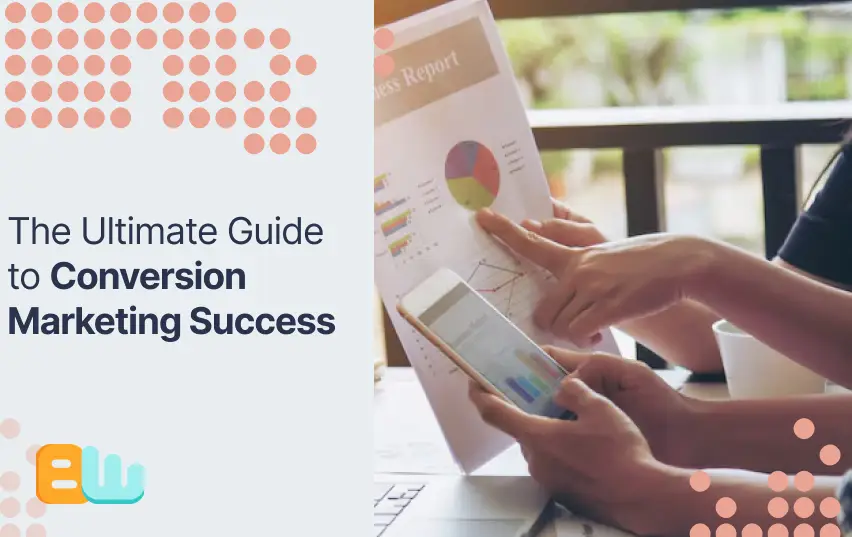
In today’s challenging digital world, conversion marketing is essential for business growth. It helps convert potential customers into loyal customers by guiding them through their buying journey until they purchase. This guide will show you the critical parts of conversion marketing. You will gain the knowledge and tools you need to improve your website and marketing efforts, which will help you achieve higher conversion rates.
Understanding the Fundamentals of Conversion Marketing
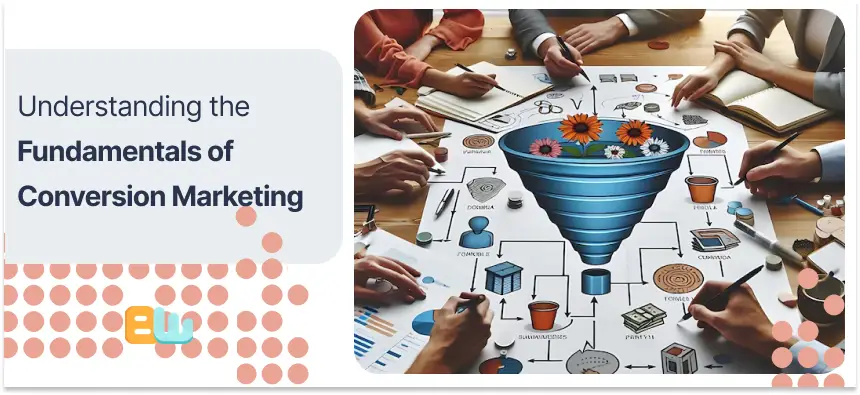
Conversion marketing is the method of helping potential customers take a specific action on your website. This action can be buying something, signing up for a newsletter, or downloading a resource. The goal is to create a smooth and convincing experience that leads to more conversions and boosts business growth.
Conversion marketing also understands that only some visitors to your website are at the same point in the buying journey. It focuses on knowing your audience, their needs, and where they are in deciding what to do. You can effectively nurture leads and promote conversions by matching your marketing efforts with their journey.
Defining Conversion Marketing in Today’s Digital Landscape
Conversion marketing has changed a lot in today’s busy internet world. It is now brighter and relies more on data. Getting people to visit your website is not enough anymore; you must also ensure they become customers.
Many businesses compete for attention online. Having a solid online presence is more than just being seen; it means being exciting and convincing, too. Conversion marketing helps businesses achieve this.
Why Conversion Marketing is Essential for Business Growth
Conversion marketing is essential for business growth. It shifts the focus from just attracting visitors to turning them into paying customers. This method ensures that your marketing efforts lead to actual results and helps boost your return on investment (ROI).
When you focus on conversions, you get more than customers and build loyalty. Conversion marketing is about providing excellent customer experiences and building trust, which can encourage people to come back for more.
The Psychology of Conversion: What Influences Consumer Decisions
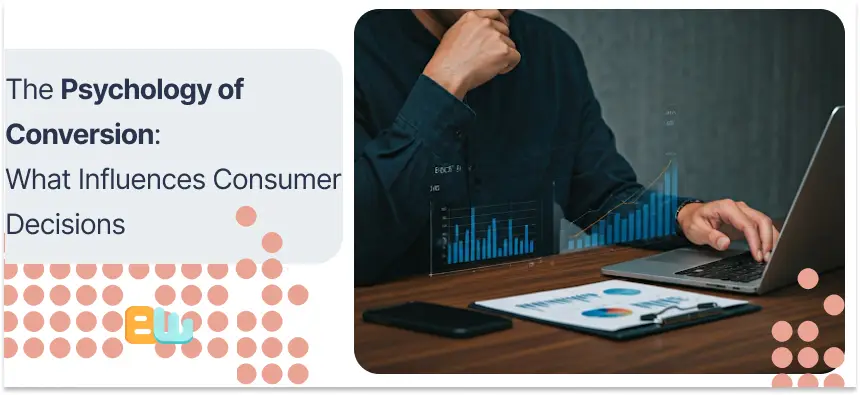
Understanding why people make buying choices is key to successful marketing. It’s not only about showing your product or service. It’s about relating to your audience on a personal level.
People are influenced by their feelings. They pay attention to what others say and can be affected by mental shortcuts. You can craft marketing campaigns that connect, create trust, and inspire actions using these psychological influences.
Emotional Triggers that Drive Conversions
It’s clear that emotions significantly affect people’s shopping choices. If you understand and use emotional triggers, you can create marketing campaigns that connect with your target audience. This connection can lead to more people choosing your products.
One strong way to use emotional triggers is to focus on your audience’s pain points. Recognizing their problems and showing them how your product or service can help build empathy and trust.
Leveraging Social Proof to Boost Credibility and Trust
In today’s digital world, trust is vital. Using social proof is a powerful way to increase sales. People are more likely to connect with a brand or product when others have had good experiences.
Adding trust signals like customer testimonials, reviews, case studies, and social media mentions can help your credibility. Make sure to display these clearly on your website and landing pages. This way, potential customers can see the benefits that others have received from your brand.
Crafting a Conversion-Driven User Experience

A user experience focused on conversions is crucial in today’s digital world. It’s not only about having a nice-looking website; it’s about ensuring visitors can quickly and smoothly move through your site.
From the time a visitor arrives on your site, every part needs to help them take the action you want. This means easy navigation, attractive visuals, convincing words, and intelligent calls-to-action should all work together to improve the user journey.
Website Design Elements That Enhance User Engagement
An engaging website is essential to keep visitors interested and help them convert. Looks matter, but key design elements can improve user experience and engagement.
First, make sure your website offers clear and easy navigation. Visitors need to find what they want quickly and without trouble. To improve navigation, use a simple menu, add a search box, and include breadcrumbs.
Next, boost engagement using high-quality images, videos, and interactive features. Choose visuals that relate to your content and spark emotions. Adding videos can help show products or engagingly explain tough ideas.
Speed and Mobile Optimization: Keys to Keeping Visitors on Your Site
Your website must work well on mobile devices in today’s mobile world. This is key to getting more conversions. Many users now visit websites on their smartphones, so having a design that adapts to mobile is very important.
Website speed is also a big part of user experience and affects conversion rates. If your website loads slowly, users may get frustrated and leave, which is the bottom line. You can speed up your website by optimizing images, browser caching, and reducing redirects.
The Role of Content in Conversion Marketing
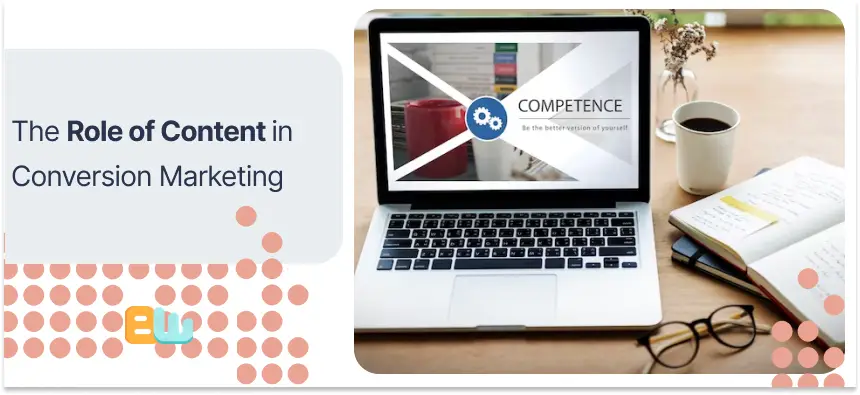
Content marketing is very important in conversion marketing. It’s not simply about making content. It’s about making content that leads to conversion. You need to know your target audience and their pain points. Then, craft content that meets their needs and desires.
When you show your brand as a trusted source of useful information, you can build trust and nurture leads. This approach helps to guide potential customers toward conversion. Content marketing is about offering value at each step of the customer journey. This, in turn, helps create a successful conversion marketing strategy.
Creating Content That Converts: Tips and Strategies
Creating good content that connects with your target audience is critical to improving your conversion rate. But how can you produce content that engages people and inspires them to take action? Here are a few important strategies:
First, know your audience. Understand their pain points, motivations, and hopes. Do market research, check your website data, and group your audience to make your content fit their needs. The aim is to give useful information that meets their needs and challenges.
Using Storytelling to Connect with Your Audience and Drive Actions
Storytelling is a vital tool in conversion marketing. It helps you connect with your audience on a deeper level. Presenting facts and numbers is essential, but telling a story makes it more enjoyable. A good story draws your target audience in.
You need to know your audience well to use storytelling for conversion optimization. Think about their journey and what drives them. What problems are they facing? How can your product or service help? Build your story around these key elements. Use real-life examples and relatable situations to explain your message clearly.
Optimizing Calls-to-Action for Higher Conversion Rates
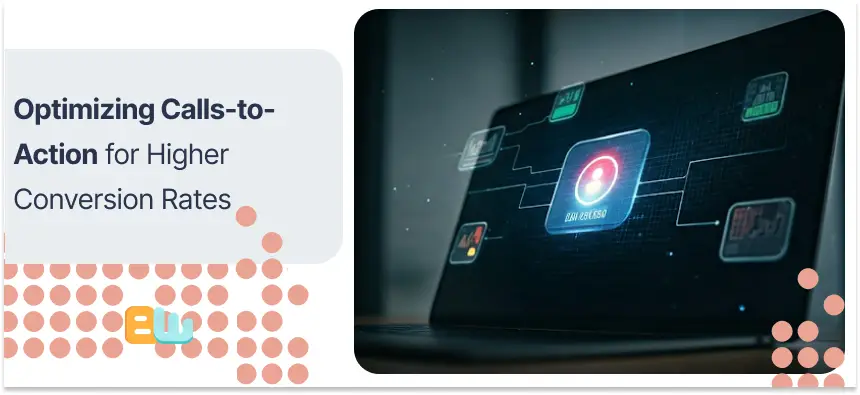
Calls-to-action (CTAs) are very important for helping visitors decide to convert. They act like signposts, showing people what to do next. But more than just putting CTAs on your website is required. You must create and optimize them carefully for the best results.
A good CTA is clear and straight to the point. It uses strong action words that make people want to act right away. It should also show the value proposition by highlighting what users will gain by clicking. Where you place your CTAs and how they look are key to grabbing attention and getting clicks.
The Anatomy of an Effective CTA
Creating effective CTAs is very important for getting visitors to convert. You should not just tell them what to do. You need to inspire them by adding urgency and excitement.
A good CTA uses strong action words that push users to take the desired action. Instead of saying “Learn More,” use words like “Download Now,” “Get Started Today,” or “Claim Your Free Trial.” These phrases make people feel the need to act quickly.
A/B Testing: Finding the Right Words and Placement for Your CTAs
A/B testing improves your calls to action (CTAs) and boosts your marketing efforts. It means creating two or more versions of your CTA. Each version can have a different button text, design, or placement.
With A/B testing, you will learn what your audience likes the most. You can see the results to see which version gets more clicks and conversions. This way, you use data to make smart choices and enhance your CTAs for the best effect.
Measuring and Analyzing Conversion Success

In conversion marketing, it’s important to measure and analyze your success. This helps you see what works and doesn’t and find ways to improve. It is an ongoing process of checking, studying, and optimizing for better results.
You should track key performance indicators (KPIs). These include conversion rates, bounce rates, customer lifetime value, and cost per acquisition. By closely monitoring these metrics, you can spot troubles in your conversion funnel. This allows you to make smart decisions based on data, and over time, you can improve your website’s performance.
Key Metrics to Track Your Conversion Marketing Performance
Tracking the right key performance indicators (KPIs) is essential. It helps you see how well your conversion marketing strategy works and find improvement areas. These metrics show useful information about your website traffic, user behavior, and how well your site changes visitors into paying customers.
The conversion rate is one of the most critical KPIs. It shows the percentage of visitors who took the desired action, such as purchasing or filling out a contact form. By monitoring your conversion rate, you can understand how well your website is doing and make changes if needed.
Tools and Techniques for Analyzing Conversion Data
Analyzing conversion data is crucial for understanding what’s working and what needs to be added to your marketing strategies. Fortunately, several tools and techniques are available to help you make sense of the data and extract actionable insights.
Website analytics tools like Google Analytics are invaluable for tracking website traffic, user behavior, and conversion rates. These tools provide a wealth of data that can help you identify areas for improvement in your conversion funnel. Heatmap tools can visually represent user interaction on your website, revealing high engagement areas and highlighting potential usability issues.
Conclusion
Conversion marketing is very important for helping businesses grow in today’s digital world. It helps to know how customers think, create good content, and improve user experiences to boost conversion rates. Using emotional triggers, showing social proof, and planning effective calls to action are crucial to success. Also, measuring and looking at conversion data is vital for improving strategies and getting better results. By using strong marketing strategies and always making them better, businesses can improve their online presence, connect with customers, and increase conversions. Stay updated, be creative, and watch your conversions rise!
